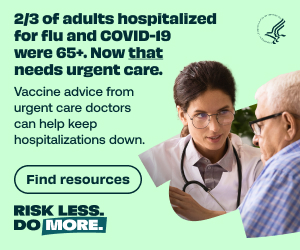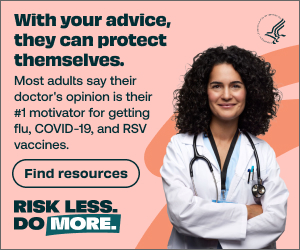As an ED leader, you must not only have a vision and plan, but you must communicate that vision effectively to those around you – and above you. Here are six ways to communicate more effectively in order to advance your department and improve patient care.
Leadership is about having a vision and implementing a plan. Communication is the integral ingredient that links your vision to action. In order to provide the best and most efficient healthcare, particularly in a growing environment, everyone must be on the same page and I suspect you feel a constant need to update your team about the changes that are occurring. So the question becomes how do we get our colleagues to listen and retain the pertinent info?
Above, Below, Beside
It starts with a comprehensive communication strategy that is “above, below, and side-to-side”. Regular meetings with those above you (CEO, CMO, CNO), side to side (your nurse manager and other key physicians and department chairman in the hospital) and below you (your docs and mid-levels) allows you to communicate your message, share and gather information, build relationships, and coordinate your actions, among other things.
When doing a retrospectoscope root cause analysis on why contracts go sour or why the CEO suddenly wants a provider gone, it’s pretty common to find that the chairman wasn’t meeting with the CEO or with his team.
Start with the ‘Why’
In a fantastic TED talk, author and leadership expert Simon Sinek uses a simple leadership model that starts with asking, or answering, the question “Why?” From an ED point of view, our “why” is providing great emergency care. Most of your docs probably focus more on the “what” of providing emergency care. But if we make the “why” our principle mission and follow it with actions that support that mission, success should follow. Sinek starts with the “why,” then adds in the “how” and finally completes it with “what.” Take 18 minutes and see why over 17 million people have watched his TED talk.
Your Staff
One of the most basic ways to share information is through a monthly staff meeting. I’m always surprised when I hear about facilities that don’t have these or have them much less regularly. At its most core, there is value in getting everyone together to talk. It builds the team and allows for an equal exchange of information. I know several people who have virtual meetings (some with video so everyone knows if you’re paying attention) but these don’t have the same team building affect and usually don’t generate the same amount of discussion as when everyone is in the same room. Recently, I heard about a group that has in-person meetings but each individual is allowed to attend a certain percentage of them virtually. The group is big enough that there is always a critical mass of people in the meeting room to insure discussion, and there is the added benefit of increased meeting attendance by people calling in who otherwise wouldn’t be able to attend. With Power Point, there’s no excuse for not having a polished presentation with data and images. I find that two hours is about the right length. People get tired and lose interest if it goes beyond that but if it’s too short, some may feel it’s not worth upsetting their day by coming to the hospital. While much of the meeting is likely presenting information, as author Patrick Lencioni points out in Death by Meeting, it’s very helpful to add some conflict to the meeting where discussion can take place and people can feel involved in creating and implementing the ED strategy.
I reviewed our physician orientation manual today with a new provider. It’s 40 pages long. My new docs can’t retain all the information and I’m pretty sure my regular docs have forgotten parts of it already. Because of this, I’ve actually started sending it out annually to all of my providers in the hopes that even old timers will take an hour to refresh themselves on ED operations. But that doesn’t insure they’ll read it and doesn’t address the problem that every week there’s a new initiative, ranging from the mundane to the critical. For instance, we had new peds hospitalists start this week that came with changes to who we contact, how we contact them and how our consults and admission process changed. Ideally, we’d discuss this issue at a staff meeting, but the process evolved in between monthly meetings and I needed to get the information out to the staff quickly.
Email: A Necessary Evil
I have a friend who works in sales for a large international company. She gets updates from the company CEO via twitter. Yes, the CEO actually tweets to the world and expects her employees to follow her. Due to privacy issues, I don’t recommend tweeting the information you need to share with your staff, but the sheer volume of emails that I have to send out each day to our staff does give me pause. There has to be a better way since none of us went into emergency medicine to sit at a desk and read emails – though it is one of the necessary evils of our job. I think most of my docs have developed email fatigue and either skim them or skip them all together. Some issues are critical and need to be emailed out immediately but one solution is to lump less critical updates into a weekly email. Keep these interesting by pointing out some of the key issues of the week or some of the great diagnoses that your providers made. I even have some friends who send out a daily email rehashing yesterday’s events (and cc’ing administration so they know what’s going on, too). You need to set the expectation that your providers check their email regularly and in a timely fashion and that they know they’re responsible for the info in the emails.
When you’re growing and changing the ED culture, it’s critical to have an ally or two to help move your agenda forward. These are typically your assistant directors and you should be talking to them several times a week at least. The more they know, the better equipped they’ll be to carry your message when they work clinically or go to meetings, so take advantage of them. Communicating your message involves talking to people directly and these should be easy conversations. Towards that end, don’t hesitate to include your nurse leadership in your monthly meeting either. I’ve always figured that the more people who know the good work the ED is doing, the more likely we are to continue to get support to achieve our future goals.
While it’s easy to share your vision with your assistant directors, harder but necessary conversations are when people aren’t living up to your expectations. Most of us have not received any training on how to deal with the difficult employee. It’s not unusual for medical directors to just ignore the problem or make an excuse for the person that it’s a one-time event. Unfortunately, these problems don’t improve by burying your head in the sand so they need to be addressed head on. These types of situations don’t typically get better by sending an email or having a slide to present at a staff meeting. They require face to face communication. If the problem is identified early enough, many of these conversations actually take place before they become difficult. A first time negative interaction between an ED doc and a hospitalist or a patient may be able to be discussed in the clinical area and it lets the provider share their side of the story, but also they know that you’re aware of the issue. The second time usually means a conversation in your office and escalates from there. These are the types of conversations that benefit you because the employee needs to recognize the issue and may need remediation. You can provide the counseling to help them improve at their job, and, if they don’t improve, and you’ve documented correctly, this makes it easier to fire them from your group.
Talking to the C Suite
Successful ED chairmen meet with someone from the chief executive suite on a regular basis. The frequency may vary but most of my colleagues and I agree that every 4-6 weeks is about the minimal necessary frequency. The format may vary scheduled to impromptu but should be more structured than saying hi in the hallway. I use my time with the CEO to build our relationship, so that when the crap hits the fan, he trusts me as a leader to resolve the issue. Because people are always asking him for things, one of the first questions I ask is “what can I do for you?” I also use this time to let him know what’s going, even if it is something negative. At least this way, I can control the message since I know he’ll hear about it anyway. Missed core measures, bumps in length of stay, and provider turnover are the kinds of things that are on the CEO’s mind. I also can fill him in on our plans, like an addition or reduction in provider hours or putting a provider in triage. These meetings are invaluable when it comes to identifying small problems early and getting them resolved.
Talk the Talk
1. Understand who your key contacts are throughout the hospital and have a plan for how often you should meet
2. Regular in-person staff meetings build the team and help to get everyone on the same page with your vision. Include a “hot topic” for discussion to keep people engaged.
3. Have a regular schedule for distributing routine information via email to your group. Sending multiple, individual emails throughout the day or week will lead to email fatigue and your docs may miss something critical.
4. Regular communication with department leaders (assistant directors at a minimum) helps to carry your vision to the bedside when you’re not working clinically
5. Identify minor problems with your providers before they escalate and then manage and coach them to improvement with one on one meetings.
Michael Silverman, MD, is a partner at Emergency Medicine Associates and is chairman of emergency medicine at the Virginia Hospital Center.







